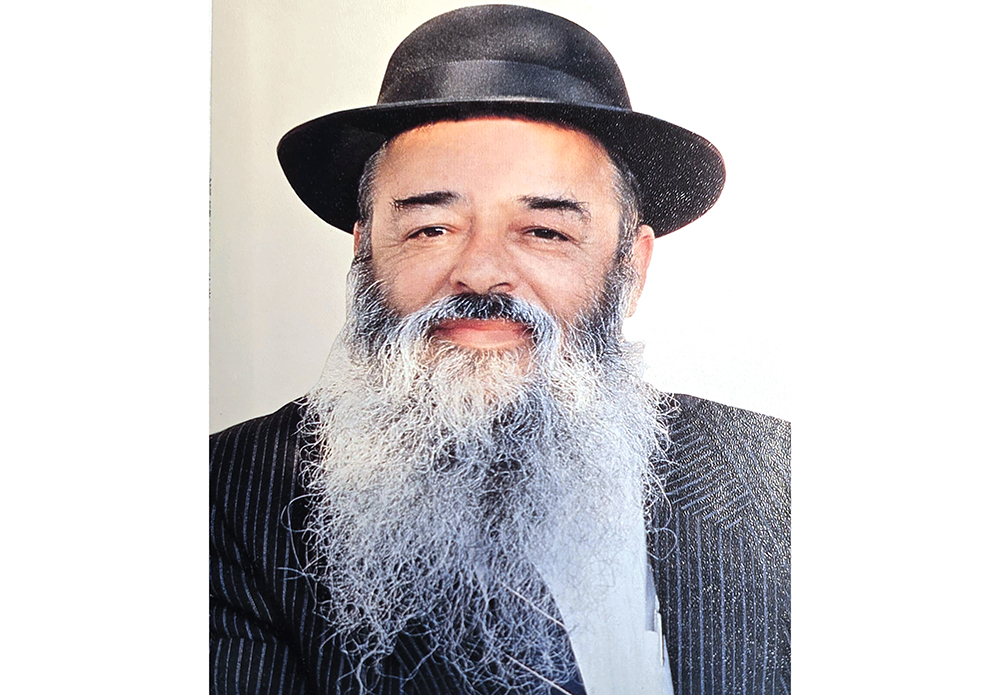Rafael Nektalov
Editor-in-Chief of The Bukharian Times

The president of the World Congress of Bukharian Jews, Lev Leviev, along with his entire family – thirty-five people! – traveled to Samarkand to celebrate the great Jewish holiday of Sukkot in the beautiful city where he spent his youth. His children, grandchildren, great-grandchildren – the large and close-knit Leviev mishpacha – flew from Israel to Samarkand and stayed at the Silk Road by Minyoun hotel. Naturally, a glatt kosher kitchen, organized by Asia Travel, was also brought in.
At the airport, the Leviev family was met by Ilya Mullojanov, president of the community, who in recent years has been working closely with the president of the World Congress. On September 11, they jointly confirmed the construction of a new Bukharian Jewish center, “Or Avner,” to be built on the site of Rabbi Shakarov’s synagogue on Respublika Street.
A month ago, I had the honor of accompanying the Bukharian Jewish leader through the Jewish quarter of Samarkand, taking part in a film being made by Israeli filmmakers about him, and witnessing his admiration and pride in the great history of the Bukharian Jews of Samarkand, who achieved remarkable success in the spiritual, economic, and cultural life of this ancient city.

He walked through the cemetery, bowing before the graves of his ancestors—the Levievs and Nektalovs, Arabovs and Mirzakhodovs. Coming to the grave of his great-grandfather Isaac Leviev, he asked, “Are there ten of us Jews here?” We counted together with the Israelis—there were eleven. Then he recited the Kaddish, and we all loudly responded, “Amen!”
That moment reminded me of a lesson Lev Leviev once taught me in Israel.
“You’re the tenth, Raphael!”
In early September, after a concert at the Israel Philharmonic Hall, Lev Leviev invited me to Shabbat at his home in one of Greater Tel Aviv’s most prestigious neighborhoods—Savyon. Naturally, as a guest, I was invited to stay the night until Shabbat’s end.
In the morning, we went to the synagogue located within the courtyard of this beautiful villa. I was struck not by its luxury, but by its thoughtful, elegant design. Numerous windows filled the space with natural light, regardless of electric illumination.
We began to pray and recite blessings. I, accustomed to synagogues with dozens of people, quietly whispered “Amen,” as usual.

The synagogue itself reminded me, in its shape and long windows, of the Small Synagogue in Kutaisi. By the entrance stood a small fountain.
Alongside family members, several Moroccan and Iranian Jews from nearby homes joined in prayer—a normal sight, as such private synagogues often serve the local Jewish community for prayers, holidays, Torah lessons, and gatherings.
In the past, in Samarkand, Bukhara, Tashkent, and Kokand, wealthy Jewish merchants often had large halls in their homes that doubled as private synagogues—like those of Shlomo Pinkhasov, Avrom (Kalam) Kalontarov, and the Abramov (Kovuli) families.
I sat next to Lev Avnerovich and observed the deep energy and devotion with which he prayed, investing emotion into every word. When the Kaddish began, I again whispered “Amen.” Lev turned toward me, as if expecting something more than a murmur. I nodded slightly and whispered again.
“Raphael, you’re the tenth! Louder, aloud—‘Amen!’” Lev said softly.
I immediately realized the importance of his words—the rule of the minyan, as my late uncle once told me when he took me to synagogue after my father’s death: “Omin goy shov!” (Answer ‘Amen’ together!)
Indeed, ten men form the minyan, the quorum required to make a prayer communal rather than personal. Hence the synagogue’s Hebrew name, Beit Knesset—“house of assembly.” It may even be a private home where Jews gather for prayer.Since then, every time I attend services, I say “Amen” loudly, looking toward Heaven, no matter how many people are present. Lev’s words—“You, Raphael, are the tenth”—taught me to take new responsibility not only for my presence in synagogue but in the entire Jewish world.

The Synagogue
The ceiling is beautifully painted with Stars of David against a blue “Israeli sky.” The Aron Kodesh (holy ark) is adorned with unique doors and holds two Torah scrolls—one in a gilded case, one uncovered.
As photography is forbidden on Shabbat, I returned afterward to photograph this exquisite family synagogue, which—judging by the attendance of neighbors—is part of the spiritual life of the entire Savyon neighborhood.
As a musician, I must note another virtue: the synagogue’s excellent acoustics—no echo, just clarity and resonance, enhancing the spiritual power of prayer and song. Achieving such perfect acoustics requires the use of sound-absorbing materials instead of hard surfaces.
“This was the project of an Italian architect,” Lev told me.
I love listening to the religious melodies performed by Lev Leviev, both in synagogue and at home during the Shabbat meal, joined by his sons and sons-in-law, who harmonize and sing in chorus. In this part of his spiritual life, Lev Avnerovich is a true Bukharian Jew, singing with the same soulful intonations as his ancestors.
During the Shabbat meal, surrounded by his children, sons-in-law, grandchildren, and great-grandchildren, I was once again immersed in that atmosphere of beauty and reverence—the songs that filled my own childhood and youth.

My attention was caught by a siddur (prayer book) featuring a photo of Rabbi Avner Zavulunovich Leviev. The Shabbat songs (shirhoy shabbati) were printed in Hebrew, in the Bukharian Jewish language (using Hebrew letters), and transliterated in Cyrillic. At the end of the siddur were songs sung on the day of brit milah (circumcision).
I asked Lev Leviev to gift me this prayer book. He kindly agreed, signed it, and handed it to me.
The Second Lesson
After Shabbat ended, I was preparing to leave for the airport. Tamara Sofieva, mother of Marik Kalontarov, arrived with her brother to pick me up. I had two suitcases—one personal, and another with books for the synagogue, which Rabbi Babayev had asked me to deliver to Leviev’s home. When Lev Avnerovich learned that my drivers were Bukharian Jews and not taxi drivers, he asked me to invite them inside.
“They’re not drivers,” he said. “They’re good people—invite them in for a minute.”

Surprised, as we were pressed for time, I went to the gate and asked them to come in. They accepted the invitation, met Leviev, and turned out to be relatives of Olga Levieva through the Sofiev family. They were served tea, took photos, and left full of joy and gratitude.
Thus ended another lesson from Lev Leviev—one not of prayer, but of kindness and hospitality.
This was translated
from Russian to English.
